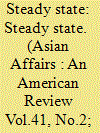|
|
|
Sort Order |
|
|
|
Items / Page
|
|
|
|
|
|
|
| Srl | Item |
| 1 |
ID:
130349


|
|
|
|
|
| Publication |
2014.
|
| Summary/Abstract |
The Energy Department announced last month that it has decided to mothball the facility that has been the centerpiece of its effort to get rid of plutonium from the U.S. nuclear weapons program as the department reviews other options for that task. In public comments by department officials and in budget documents for fiscal year 2015, the department said it was putting the facility into "cold standby," meaning that work on the structure will be scaled back to activities such as protecting the facility and its equipment from the elements and keeping the site secure. Those activities would preserve the facility for some potential future use. The facility is under construction by an Energy Department contractor at the department's Savannah River Site in South Carolina. It is designed to turn the plutonium into mixed-oxide (MOX) fuel-so called because it is a mix of plutonium and uranium oxides-for use in nuclear power reactors.
Under an agreement that Russia and the United States signed in 2000, each country is required to dispose of at least 34 metric tons of surplus weapons plutonium. In the United States, that mission is the responsibility of the National Nuclear Security Administration (NNSA), a semiautonomous unit of the Energy Department. The NNSA budget request for fiscal year 2015 would provide $196 million for construction of the MOX fuel fabrication plant and another $25 million for other associated costs, down from $344 million and $40 million appropriated for the current fiscal year. Spending for Fissile Materials Disposition, the section of the NNSA budget that includes those expenditures, would drop from $526 million to $311 million. During a March 4 conference call with reporters, Anne Harrington, NNSA deputy administrator for defense nuclear nonproliferation, said the ongoing analysis of plutonium disposition options had not eliminated the current approach as an option. But keeping that approach would require the facility's total life-cycle costs to decrease considerably, she said. Those costs are now estimated to be about $30 billion, according to the Energy Department.
|
|
|
|
|
|
|
|
|
|
|
|
|
|
|
|
| 2 |
ID:
132076


|
|
|
|
|
| Publication |
2014.
|
| Summary/Abstract |
Inherent to the United States' approach toward the Democratic People's Republic of Korea (DPRK) since the second North Korean nuclear issue emerged in the early fall of 2002 has been a policy predisposition that has coexisted with little tangible movement in the direction of resolving this very serious regional and global problem. Indeed, since its inception, overall this problem has become worse. That the DPRK has detonated three nuclear bombs hardly makes the security environment in Northeast Asia more stable, contrary to Pyongyang's claims that its nuclear deterrent force does just that, or brings the North Korean nuclear issue any closer to resolution. For sure, major missteps by Pyongyang have exacerbated the nuclear issue. Moreover, because the Bush and Obama administrations have maintained this predisposition embedded in U.S. ideology, which like any belief system, including the DPRK's juche (self reliance) idea, begets emotion accompanied by both self-deception and deception on the part of state officials, policies implemented by Washington in response to the North's perceived provocations have produced few successes. Policies built on faulty foundations, specifically those that exude the animus of the Cold War, are more likely to fail than not. This paper concludes by providing a practical solution to the North Korean nuclear issue, which should be attractive to both Washington and Pyongyang: a conditional peace treaty that rather quickly leads to the DPRK's denuclearization.
|
|
|
|
|
|
|
|
|
|
|
|
|
|
|
|
| 3 |
ID:
129082


|
|
|
|
|
| Publication |
2014.
|
| Summary/Abstract |
In this article I explore how the post-9/11 neo-liberal climate of globalization has served as the context within which is articulated masculinist and orientalist forms of nuclear discourses between India and the United States (US). To this extent, I draw from feminist international relations (IR), that security is a gendered phenomenon, to explore the linkages between masculinities and nuclear weapons as underpinning the nuclear security discourses between India and the US. Yet considering issues of international hierarchy and power relations between India and the US, I also draw from Edward Said's Orientalism to explore how assumptions of orientalism are also sustained in these masculinist nuclear discourses. My contribution lies in enriching feminist IR with a post-colonial angle by suggesting that feminist IR continue to engage with post-colonial feminist perspectives to comprehend the masculinist and orientalist forms of identity politics that underpin security relations/discourses between Western and post-colonial states.
|
|
|
|
|
|
|
|
|
|
|
|
|
|
|
|
|
|
|
|
|